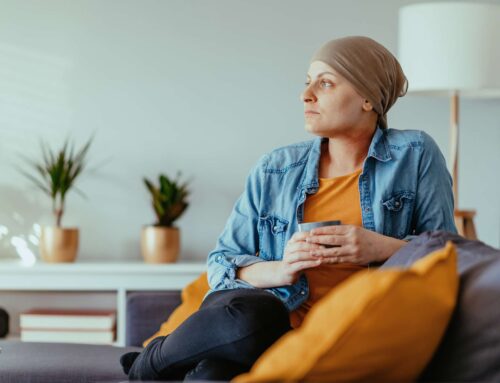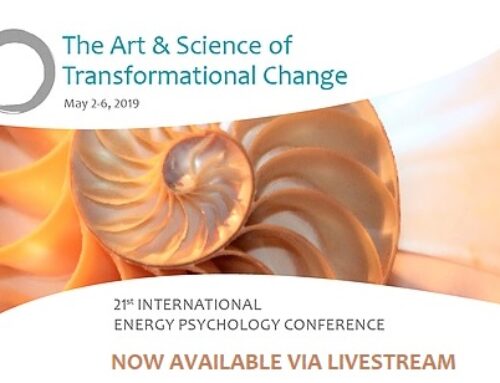John C. Hagan III, MD, FACS, FAAO, Editor, Missouri Medicine
Imagine a medical syndrome affecting as many as 20% of people who are resuscitated after almost dying in a medical or surgical setting. Realize that this means that as many as 8 million to 20 million Americans have experienced the syndrome. Understand that the syndrome itself is easy to diagnose and treat, but improper diagnosis and treatment may cause lifelong adverse physical and mental health problems. Know, too, that physicians receive no training whatsoever on this syndrome.
You may insist that nothing so consequential could possibly escape the attention of medical educators and clinical researchers. Hard to imagine, isn’t it?

One medical syndrome has all the above characteristics: the well-deRned and documented clinical syndrome of near-death experiences (NDEs). The intent of this article is to provide a comprehensive understanding of NDEs, since almost certainly patients of yours will experience this several times during your career. You should know how to respond.
This article is based on a unique and highly acclaimed series of peer-reviewed articles on NDEs that appeared in Missouri Medicine: The Journal of the Missouri State Medical Association, for which I serve as editor. The series ran from September 2013, to August 2015, and subsequently was updated and expanded into a medical textbook titled The Science of Near-Death Experiences. Because of its unique nature, many world experts responded when asked to contribute to the series and, later, the textbook. All statements in this essay are sourced to the text and detailed references provided herein.
Case Presentation A 48-year-old Italian-American man underwent exploratory laparotomy at North Kansas City Hospital, in Missouri, when he suffered uncontrolled hemorrhage and cardiac arrest. He was in extremis for 40 minutes and was defbrillated several times. He stayed in the ICU for 10 days and the hospital for 45 days. In the ICU, he told his physicians and nurses, “When I was dead, I went to heaven and saw my mother and God.” The physicians and nurses told him he imagined the visit to heaven and his brain just did not have enough oxygen. He was advised not to tell anyone about “your hallucination or people will think you have had brain damage.”
On a subsequent trip to Italy, he told Italian physicians about his experience.
They quickly confirmed that he had had a “near-death experience,” and they told the patient that it was common and that most people lived better lives and lost their fear of death after having experienced one. In a private interview, the patient told me about the NDE. He said he suddenly felt at peace, left his body and looked down to see surgeons sticking their hands into a blood-filled abdomen and anesthesiologists pumping blood into both arms. He entered a tunnel of light and “went to heaven.” He claimed that he was met by his deceased mother in a joyful reunion. With his mother he met and became one with the deity, who he described as being a brilliant ball of loving light.
The patient, who was raised Catholic, observed, “Heaven is everything I hoped it would be and more. I can’t begin to describe how at peace I was.” His mother then told him it was not “his time” and that he had to go back to earth, but they would be together again. The patient told me, “We have nothing to fear when we die.” He was upset and distressed that his
American physicians and nurses did not believe him. The Italian physicians’ explanation, by contrast, had brought him peace of mind.
Why Understand and Study NDEs? In 1975, psychiatrist Raymond Moody, MD, PhD, described 150 patients who reached the threshold of irreversible death, yet recovered, usually after medical resuscitation, and believed while they were clinically dead they had visited a heavenly place and returned with a redemptive message. Dr Moody called this syndrome a “near-death experience.” His book, Life After Life, has sold more than 13 million copies, and he wrote the foreword for The Science of Near-Death
Experiences and its introductory chapter. Dr Moody noted that records of what many researchers believe are NDEs date back to ancient Egypt and Greece. Many paintings from antiquity, for example “Ascent of the Blessed,” by Hieronymus Bosch, dated to 1490, irrefutably show the tunnel of light with souls ascendant into a heavenly place, which is a signature stage of a redemptive NDE.
Before describing the nine stages of a prototypical NDE, it is important to note that our book makes no assertion or judgment about the reality or validity of the religious (redemptive or not) content. As physicians, our interest is in the recognition of people who have had an NDE and how
best to treat them afterward to maximize physical and mental health. Interpretation of the religious content is not within the sphere of evidence-based medicine, and thus is not the focus of the book or this article. The common clinical syndrome of NDE is an important condition suitable for clinical study and medical education.
Stages of an NDE
Peace
Body Separation
Entering the Darkness
Seeing the Light
Entering the Light
Return
The correct approach to both diagnose and treat NDE patients is simple:
Ask
Listen
Validate
Educate
Refer
Stages of an NDE
Dr Moody described nine stages of an NDE, although most events do not contain every stage. In the context of a person who is agonal or clinically moribund, the patient may report:
- Sudden peace and relief from pain.
- Perception of a relaxing sound or other-worldly music.
- Consciousness or spirit ascending above the person’s body and remotely viewing the attempts at resuscitation from the ceiling (autoscopy).
- The person’s spirit leaving the earthly realm and ascending rapidly through a tunnel of light in a universe of darkness.
- Arriving at a brilliant “heavenly place.”
- Being met by “people of the light,” who are usually deceased friends and family, in a joyous reunion.
- Meeting with a deity that is often perceived just as their religious culture would have perceived them or as an intense mass emitting love and light.
- In the presence of the deity, the person undergoes an instantaneous life review and understands how all the good and bad they have done has affected them and others.
- The person returns to their earthly body and life, because either they are told it is not their time to die, or they are given a choice and they return for the beneRt of their family and loved ones.
Kenneth Ring, PhD, a research psychologist and professor emeritus of psychology at the University of Connecticut, in Storrs, has conhated the steps of an NDE into Peace, Body Separation, Entering the Darkness, Seeing the Light, Entering the Light and Return. An out-of-body experience (OBE) is always part of an NDE, but an OBE may occur in other settings. Fainting, deep sleep, and alcohol or drug use may cause a person to report an OBE,during which they leave their body and view it briehy from a position outside the body, without the
other phases of an NDE.
Jeffrey Long, MD, is a radiation oncologist at the Mary Bird Perkins Cancer Center, in Baton Rouge, Louisiana, and the founder of the Near-Death Research Foundation (NDRF).
He reports in The Science of Near-Death Experiences that analysis of an NDRF database of over 4,000 NDEs found that the two most common elements of heavenly NDEs are the presence of love in both this life and in the afterlife and the existence of an all-loving and forgiving deity. Generally, Dr. Long has found that people who have experienced an NDE lose their fear of death and the NDE becomes one of the most important things that has ever happened to them, dominating the remainder of their lives.
Bruce Greyson, MD, a professor at the University of Virginia School of Medicine, in Charlottesville, and Nancy Evans Bush, MA, a clinical researcher who is president emerita of the International Association for Near-Death Studies, report that approximately 20% of people who have an NDE undergo a dark or distressing NDE that has a hellish or perdition theme. From its very onset, the person perceives a malevolent universe that is the antipode of the positive or redemptive NDE. These people especially need physicians’ help after such an event. They often spend the rest of
their lives using three adaptive patterns: 1) becoming hyper-religious and “getting right with God”;
2) trying to convince themselves that they imagined the distressing NDE and it was not real; or
3) engaging in long-term psychotherapy.
Interestingly, there is often no obvious correlation between how the person has lived life and the type of NDE that occurs. So, “saints” may have a hellish NDE, and a felon or miscreant may have a heavenly NDE.
Frequency and Diagnosis of NDEs
Prospective studies on the incidence of NDEs have been performed in Europe and have been reported by Dutch cardiologist Pim van Lommel, MD. In these studies, all patients who were successfully resuscitated after almost dying in a large referral hospital were approached by a
researcher and asked, “While you were almost dead and being resuscitated, did anything unusual happen that you would like to talk about?” At Dr. van Lommel’s Rijnstate Hospital, in the Netherlands, 18% (n=344) of resuscitated patients reported an NDE, while other similar studies gave a range of 10% to 20%. When resuscitated patients were not systematically queried about their experiences, only 2% self-reported an NDE. The NDEs occur in patients of all ages, including children. Once a physician has an understanding of the clinical syndrome of NDE, it is not at all hard to differentiate it from other clinical causes of pathologically altered mental states caused by organic disease or major psychotic disease. In the United States, if a patient self-reports an NDE, they are generally told they imagined it due to lack of oxygen to the brain or the effects of
medication. They are often advised not to talk about the NDE or people will think them to be brain damaged or mentally ill. This may create great distress and may adversely affect the patient for the rest of their life. As physicians, we have taken an oath to work for our patients’ health and
welfare. This necessitates an understanding of how to recognize and treat the significant number.
Do Physicians Have NDEs? Physicians have NDEs just like nonphysicians. Our book reports on three such experiences. Another physician, Mary Neal, MD, has also had a widely reported NDE. Eben Alexander III, MD, a Harvard neurosurgeon, in Boston, is perhaps the most well known due to his two best-selling books on his NDE, which accompanied a seemingly unexplainable recovery from an E. coli–related meningoencephalitis.
Jean Hausheer, MD, a professor of ophthalmology at the University of Oklahoma, in Oklahoma City, and the president of the Oklahoma State Medical Society, had an NDE while she was a medical student at the University of Missouri–Kansas City. A friend of mine for decades, I was
talking to her in 2015 at a regional ophthalmology meeting when she asked me what Missouri Medicine was writing about at the time. I told her about the NDE series and she acted stunned and shaken. I inquired what the matter was, and after a few minutes, she told me she had had an NDE and had never told anyone. Being an aggressive editor, I asked her if she would like to share her NDE with the world. She asked for a few days to think it over and then said she would. Subsequently, Dr. Hausheer has lectured all over the United States, primarily about her interpretation of the religious content of her experience, mainly in churches and to religious groups.
Tony Cicoria, MD, is the chief of the medical staff and chief of orthopedics at Chenango Memorial Hospital, in Norwich, New York. Dr. Cicoria had an NDE after being struck by lightning. After his NDE, he felt an overwhelming urge to learn to play the piano and compose music, both of which he accomplished.
You can hear his “The Lightning Concerto,” which he composed, at
https://bit.ly/ 2r8iGlr (https://bit.ly/2r8iGlr).
Mary Neal, MD, Wyoming’s foremost spine surgeon, had an NDE when she was totally submerged in a whirlpool for more than 25 minutes while kayaking in South America. She made an unexplainable full recovery. Dr. Neal also has written two books and lectures nationally on her
religious interpretation of her NDE.
NDEs in Children Children probably experience NDEs at the same frequency as adults. Children who are told they imagined their NDE and not allowed to talk about it fall behind their peers in social and intellectual development. Children who receive attentive listening, sympathetic and repeated validation, and education about NDEs, and who are allowed to discuss their NDE with their families in an accepting environment, often develop socially and intellectually several standard deviations ahead of their peers. Because of these Rndings, training pediatricians in general and
faculty at children’s hospitals in particular about NDE is especially important.
Veridical NDEs and the Brain: Is it the Sole Organ Of Consciousness?
The Rrst few stages of an NDE—when a person claims to leave their body, ascend above their clinically dead body and look down on resuscitation efforts—lend themselves to observational science. Physicians and medical staff who are present often can conRrm or refute the details of the resuscitation that the experiencer proffers at a later time. If these descriptions of the rescue staff agree in minute detail with those of the experiencer, then the event is spoken of as being veriRed or “veridical.”
Anesthesiologists may wonder how even a fully awake person, with all their senses intact, who had their eyes filled with ointment and taped shut and then their head covered with drapes, could report in minute detail events in the operative table and around and behind the surgical table. Moreover, veridical NDEs include case reports of deaf people hearing conversations and blind people seeing events. We offer no explanation for these events, but some chapter authors, such as Drs. van Lommel and Alexander, believe that consciousness does not reside in the brain, which they call “non-local consciousness.”
In The Science of Near-Death Experiences, University of Kentucky professor of neurology Kevin Nelson, MD, offers a very complex, distressed-hypoxic brain–based explanation for the nine stages of a classic NDE. Dr. Alexander offers a refutation of this brain-based explanation. These explanations are not necessary to busy clinicians but are of great interest to physicians and researchers in the study of the nature and origin of human self-awareness and consciousness.
Conclusion
NDEs are extremely common but poorly recognized, and tend to be avoided or mistreated by American physicians. Although they have religious content, as physicians and scientists we need not—and indeed should not—concern ourselves with validating or interpreting any religious theme. Proper treatment simply involves understanding the content and course of an NDE and then engaging in: a systematic inquiry; sympathetic listening;
validation; education of the patient and family; and referral to books and organizations, such as IANDS, that can nurture the patient and their family.
Dr Hagan reported no financial interests in either Missouri Medicine or The Science of Near-Death Experiences, both of which are owned by the nonprofit Missouri State Medical Association. Royalties from sales of the book, which is available on Amazon.com (http://Amazon.com), are used by the Missouri State Medical Association to fund student loans and physician health programs. Dr Hagan is a practicing ophthalmologist based in Kansas City, Missouri.
References
- Hagan III, JC. The Science of Near-Death Experiences. Columbia, MO: University of Missouri Press; 2017.
- Moody RA, Jr. Life After Life. New York, NY: HarperCollins Publishers; 1975, 2015.
- Ring K. Life at Death. Kindle edition: self-published; 2013.
- www.nderf.org (http://www.nderf.org)
- www.iands.org (http://www.iands.org)
- Greyson B, Bush NE. Distressing near-death experiences. Psychiatry. 1992;55(1):95-110.
- Bush NE. Dancing Past the Dark: Distressing Near-Death Experiences. Cleveland, TN: Parson’s Porch Books; 2012.
- Van Lommel P, Van Wees R, Meyers V, et al. Near-death experiences in survivors of cardiac arrest: a prospective study in the Netherlands. Lancet. 2001;358;(9298):2039-2045.
- NDE book page 147 ref 7.
- NDE book page 147 ref 8.
- www.nderf.org (http://www.nderf.org)
- Alexander E. Proof of Heaven: A Neurosurgeon’s Journey into the Afterlife. New York, NY: Simon & Schuster; 2012.
- Alexander E. The Map of Heaven: How Science, Religion and Ordinary People Are Proving the Afterlife. New York, NY: Simon & Schuster; 2014.
- Neal M. To Heaven and Back: A Doctor’s Extraordinary Account of Her Death, Heaven, Angels, and Life Again: A True Story. Colorado Springs, CO: WaterBrook Press; 2012.
- Neal M. 7 Lessons from Heaven: How Dying Taught Me to Live a Joy-Filled Life. New York, NY: Convergent Books; 2017.
- Atwater PMH. Children of the New Millennium: Children’s Near-Death Experiences and the Evolution of Humankind. New York, NY: Three Rivers Press; 1993.
- Morse M, Perry P. Where God Lives: The Science of the Paranormal and How Our Brains Are Linked to the Universe. New York, NY: Harper Collins Publishers; 2000.
- Ring K, Cooper S. Mindsight: Near-Death and Out-of-Body Experiences in the Blind. 2nd ed. Bloomington, IN: iUniverse; 2008.
- Ring K, Valarino EE. Lessons from the Light: What We Can Learn From the Near-Death Experience. Needham, MA: Moment Point Press; 2006.
- Van Lommel P. Consciousness Beyond Life: The Science of Near-Death Experiences. New York, NY: HarperCollins Publishers; 2011.



